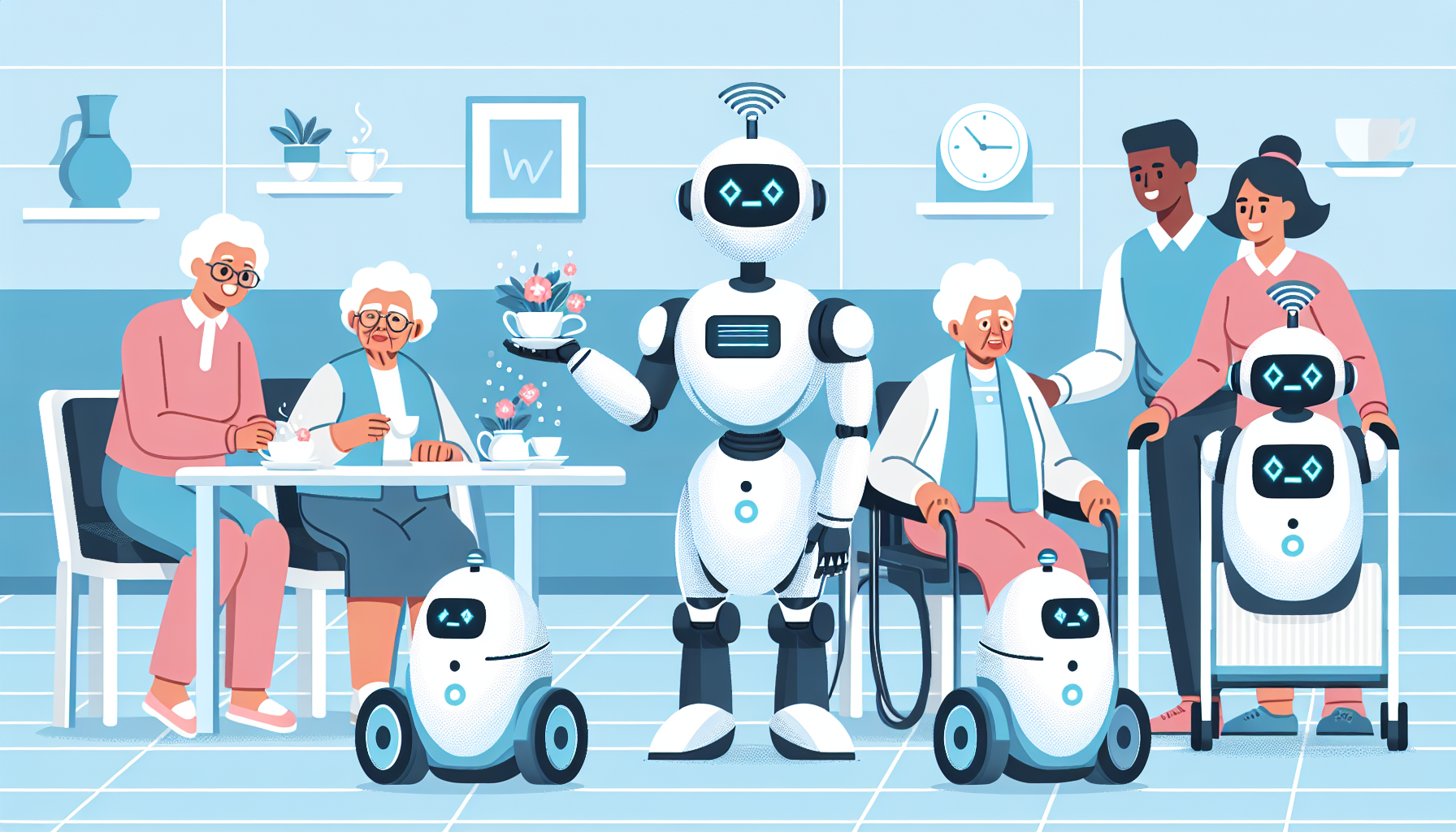The Evolution of Elder Care
Understanding the Current Landscape
In recent years, the landscape of elder care has been changing dramatically, driven by technological advancements and shifting societal values. With an aging population and a higher demand for quality care, traditional models of elder care are being stretched to their limits. Family caregivers often find themselves overwhelmed, and health care systems are facing challenges in providing adequate support to their aging patients.
The Role of Technology
Technology has become a central player in addressing these challenges. From telemedicine to wearable health monitors, innovations are improving care efficiency. One standout development within this technological revolution is the emergence of robot servants. These robotic companions can significantly enhance the quality of life for the elderly and ease the burdens placed on caregivers.
The Capabilities of Robot Servants
Daily Assistance
Robot servants can perform a variety of daily tasks that are essential for elderly individuals. These tasks include medication reminders, meal preparation, and even light housekeeping. For a senior citizen living alone, this can lead to increased independence and a reduction in the risk of missing medications or managing household chores alone.
Social Interaction
Beyond physical assistance, robot servants can provide companionship. Loneliness and social isolation are significant issues among the elderly population, often leading to declines in mental health. Robots equipped with conversational abilities can offer companionship and engage in social interaction, helping to alleviate feelings of loneliness and anxiety.
Emotional Support
Some advanced robots are designed with artificial intelligence that allows them to recognize emotional cues. They can respond to a person’s mood, offering comfort when they sense sadness or agitation. This type of emotional intelligence in robotic companions might help create a stable emotional environment for seniors.
Health Monitoring
Robot servants can be equipped with sensors and health monitoring capabilities, allowing them to track vital signs and notify caregivers if there are any concerning changes. This can be particularly valuable for seniors with chronic conditions who require regular health assessments. By constantly monitoring these health indicators, robot servants provide peace of mind to both seniors and their families.
Challenges and Considerations
Technological Limitations
Despite the potential benefits, there are still limitations to the current technology. Advancements in robotics are continually evolving, and not all robot servants are equipped with the capabilities needed to assist every individual with varying degrees of mobility, health conditions, and cognitive functions.
Acceptance and Adaptation
There’s also the matter of generational acceptance. Many elderly individuals might feel apprehensive about interacting with robots, viewing them as cold or impersonal. Successful integration of robots into elder care requires education and familiarization for both seniors and their families to understand the benefits that these robots can provide.
Bridging the Gap Between Generations
To address this, pilot programs that include educational workshops can help bridge the gap between generations. Understanding how robots work and the benefits they can offer may help ease fears and encourage acceptance.
Ethical Implications
The introduction of robot servants into elder care raises ethical considerations that need to be thoughtfully considered. Concerns regarding privacy, autonomy, and the emotional impact of relying on robots for companionship must be addressed.
Maintaining Human Connection
While robots can provide many benefits, maintaining human connection is vital. The use of robot servants should supplement, not replace, human interactions. Community programs that combine robotic assistance with personal visits from caregivers could bring about a well-rounded approach to elder care.
Future Prospects for Robot Servants in Elder Care
Innovation in Design
As technology continues to advance, we can expect significant improvements in the design and capabilities of robot servants. Future models may feature more natural movements, improved communication skills, and a greater ability to adapt to the emotional needs of their users.
Integration into Health Care Systems
The integration of robot servants into formal health care settings presents exciting opportunities. Hospitals and nursing homes could utilize these robots to assist staff, allowing healthcare professionals to focus more on patient care while the robots handle routine tasks. This shift may also reduce burnout among caregivers, leading to better outcomes for patients.
Collaboration with Health Professionals
Furthermore, the collaboration between healthcare professionals and robotic technology developers can result in enhanced models that are specifically tailored for elder care environments. Developing robots with input from healthcare providers can lead to better design and functionality suited to meet specific needs.
Global Perspectives
Countries around the world are exploring the implementation of robot servants in elder care. In Japan, where the population is rapidly aging, robotic companions are already being utilized in various elder care facilities. Observing the effects of these implementations globally can inform best practices and accelerate the adoption of these technologies elsewhere.
Conclusion: The Road Ahead
While there are challenges to overcome, the potential for robot servants in elder care is significant. With thoughtful implementation, ethical considerations, and ongoing dialogue between designers, care providers, and the elderly, we can harness the benefits of this technology to create a future where our seniors receive not only the assistance they need but also the companionship they deserve. The journey is just beginning, and as we forge ahead, the unseen potential of robot servants can revolutionize the way we think about elder care.
